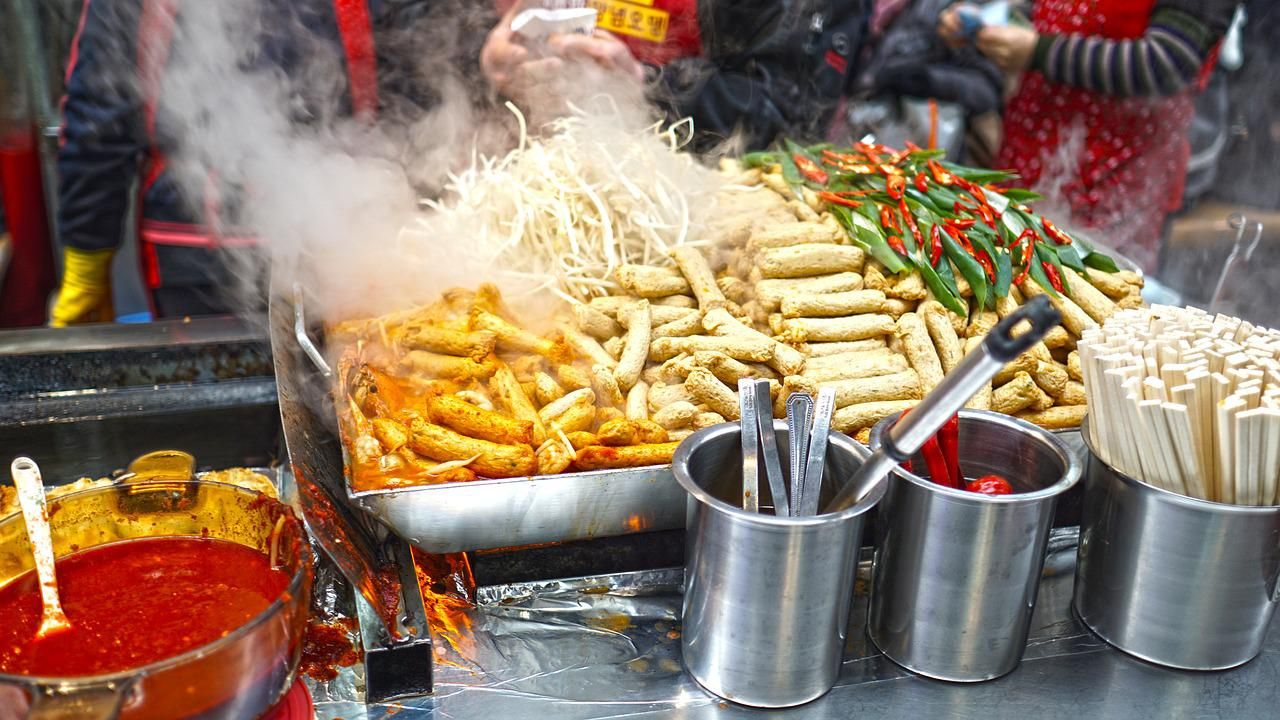Korean Street Food
Hi, I like the Korean food show that I am watching on YouTube they call it Mogbang in Korean (먹방) which is mean the food show or eating on the live show. In this topic, the food that I knew from this amazing show is going to be the main one.

Korean Street Food:
In Korea, people like to have the food that the Korean people sell it outside and it is not just one type of it but the few that I have tried before I will mention here. Even the most casual foodies will be enthralled by the sheer variety of delectable items on exhibit at street food markets, which are busy hives of energy, heat, and perfume. Get ready for an awe-inspiringly beautiful and sensual journey through Korean Food as I highlight 18 delicacies from any Korean food market or street vendor that you must try.
Kimbap The Roll Rice with Vegetable And Meat:
Gimbap is rolled rice wrapped in seaweed with a variety of fillings. Over the years, there have been other versions of it one of the most important dishes in korean, such as gimbap with cheese, tuna, and other shellfish. Additionally, there are variants of the design, such as the delicious little micro Gimbaps and the Triangle Gimbap, which is the Korean equivalent of the Japanese Onigiri. They are called Kkoma Gimbaps and are around one-fourth the size of a conventional Gimbap. Koma is a sweet and informal way to refer to a young child.
Fewer ingredients are utilized in the filling since Kkoma Gimbaps are much smaller, allowing for optimal rolling. Koreans make a mustard-soy sauce dip to go with their Kkoma Gimbap as a way to make up for it. The popularity and addictiveness of this combo surprised the Koreans. Due to the fact that it causes you to "forget your senses and devour wildly," it was given the name Mayak Gimbap. It is now a cherished mainstay of old-style Seoul markets.
Rice Cake (TTEOKPOKKI):
Any rice-based dish that has been molded, compressed, or otherwise integrated into a single entity is considered to be a rice cake. Many diverse civilizations that eat rice have a vast range of rice cakes, which are especially common in Asia. Rice flour cakes, crushed rice cakes, and cakes prepared from whole grains of rice squeezed together or combined with another binding substance are common varieties.
Mama Lin's attempt to manufacture Korean rice cakes, specifically the kind used in tteokbokki, led to the creation of this recipe for Asian rice cakes. Steamed rice cakes are common in Chinese cookery, just like in Korean cooking (often times called nian gao). Mama Lin prepares rice cakes for stir-frying all year long. My mother decided to learn how to make Korean rice cakes, known as tteok, after observing how my sister-in-law was purchasing them from a store. To create the distinctive chewy texture of tteok, a dough formed of rice flour is frequently pounded. The rice cakes you see here resemble garaetteok (cylindrical rice cakes) in shape, but they weren't made in the same way as conventional tteok. Because this is my mom's version of a rice cake made in the Korean tradition, I hesitate to call it a tteok or garaetteok dish. Check out this recipe from Maangchi, though, if you want to learn how to create tteok from scratch.
Rice Cake & Kimbap In UAE:
In the UAE there are too many Korean food restaurants and korean grocery that they selling food made in Korea the shops do have not popular Korean food brands that Korean people prefer to buy and for the cuisine's that they have Korean street food also I went to a place called Roll and Bubble the street food there is good and the prices good as well that you can buy it and enjoy the great taste of the food. The Restaurant is located in Dubai for me I live there and the place is quite near to my house that is why I know about it and the grocery is also located in the same place you can order the food online they are dealing with the careem and deliveroo, Talabat and noon delivery services.

